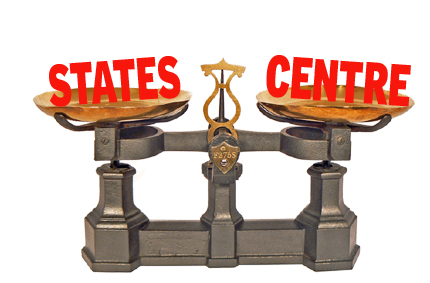Rama Chandra Panda
Much before the British handed power to Indians, they drew an agreement in principle with the Congress for framing a constitution to ensure smooth transition of power. Accordingly, a Constituent Assembly (CA) was constituted December 6, 1946, which had 389 representatives of whom 292 came from provincial assemblies. Members were elected on a limited franchise that functioned as interim Parliament until general election to the first Lok Sabha in 1952. Members of the CA had high visions.
As most members of the CA hailed from provinces, they were keen to provide a strong federal type of constitution. In 1947, then Congress President JB Kripalani proposed a constitution that is democratic and federal in character to decentralise the power structure.
However, the communal settlement leading to the creation of Pakistan compelled many members of the CA to frame a constitution of mixed character that would be partly federal and partly unitary as they were against further fragmentation of the Country’s territory. Babasaheb Bhimrao Ambedkar was President of the drafting committee, which placed the draft constitution in the CA November 4, 1948.
“Two principal forms of constitution are known to history one is called unitary and other is federal. The two essential characteristics of a unitary constitution are: the supremacy of the central polity and the absence of subsidiary sovereign polities. The draft constitution is a federal constitution in as much as it establishes what may be called a dual polity. This dual polity under the proposed constitution will consist of the Union at the Centre and the states at the periphery, each endowed with sovereign power to be exercised in the field assigned to them respectively by the Constitution,” Ambedkar said of the draft.
The Constitution mandates that the Centre should play the role of coordinator/facilitator. It should not cause any apprehension among States that it is acting in a spirit of overriding them
He further proclaimed: “One can therefore safely say that the Indian Federation will not suffer from the faults of rigidity or legalism. Its distinguishing feature is that it is a flexible federation”. According to him “the Draft Constitution has sought to forge means and methods whereby India will have Federation and at the same time will have uniformity in all the basic matters essential to maintain the unity of the country.”
Accordingly, provisions were made for common fundamental laws governing the country. To strengthen to federal system, it allowed IAS and IPS services and empowered states to form civil services. In essence the constitution provided dual polity and dual service. To avoid differences among states, provisions for conflict resolution were also provided to prevent multiplying problems.
A heated debate ensued in the Constituent Assembly September 2, 1949, over legislative lists and provincial autonomy. TT Krishnamachari, a member of the drafting committee, made an intervention: “I would like to repudiate at once, so far as the drafting committee is concerned, there is no idea of either overloading the Centre or the provinces. All we have done, to the extent that we are able to do, is only to see that the Centre takes only such powers as are needed for the purpose of coordinating the activities of the provinces.”
The founding fathers of the Constitution gave us a constitution to carry governance on mutual trust and respect to meet the aspirations of the people. In accordance with which they demarcated legislative powers of states and the Union by incorporating three legislative lists to give states their share of power with a strong Centre.
They conceived Article-1 of the Constitution, which enables both the states and Centre to share sovereignty. Territories of states were well defined and divisions made impossible without consent of state legislature.
Thus the Constitution mandates that the Centre should play the role of coordinator/facilitator. It should not cause any apprehension among States that it is acting in a spirit of overriding them. It requires leaders to display statesmen-like qualities. Veteran leaders such as Biswanath Das during debates on constituent assembly repeatedly called for the creation of a separate constitutional provision to ensure special financial assistance to states to develop backward and tribal areas. Biju Patnaik as Chief Minister during 1990-95 had several times called for greater financial powers to states to strengthen development programmes.
Against this backdrop, the recently introduced electoral bond scheme has all the ingredients to facilitate espionage on donors to opposition and regional parties, which is not conducive to multi-party federal democracy.
Also, states such as Andhra Pradesh, Tamil Nadu and Telangana are today questioning the terms of reference of the 15th Finance Commission which follows the 2011 Census. Some states apprehend that this may reduce their share of tax compared with northern States. States have also raised the demand for an increase in the states’ share in central schemes. The Pradhan Mantri Gramin Sadak Yojana, for instance, was fully funded earlier; but now the central share is limited to 60 per cent. Similarly, the state share has increased with respect to Pradhan Mantri Krishi Sinchai Yojna, which replaced Accelerated Irrigation Benefit Scheme.
Some southern States are also concerned over the language policy of the Union government. They apprehend that their distinct linguistic and cultural background would be endangered. In a diverse culture with multiple languages and religions states alone can meet aspirations of the people owing to regional and ethnic attachment. India has many problems today. The national leadership should act as trustees of states and should not betray the trust of states or give rise to apprehensions that the Centre is unmindful of their concerns and act arbitrarily to enlarge the interest of the party that controls the Union government at the cost of states. India is a union of states and to bring underdeveloped areas on par with developed ones the Centre should provide special development packages to provincial governments so that they can fight poverty and backwardness.
The writer is a former deputy speaker of Odisha Legislative Assembly and currently member, state planning board.







































